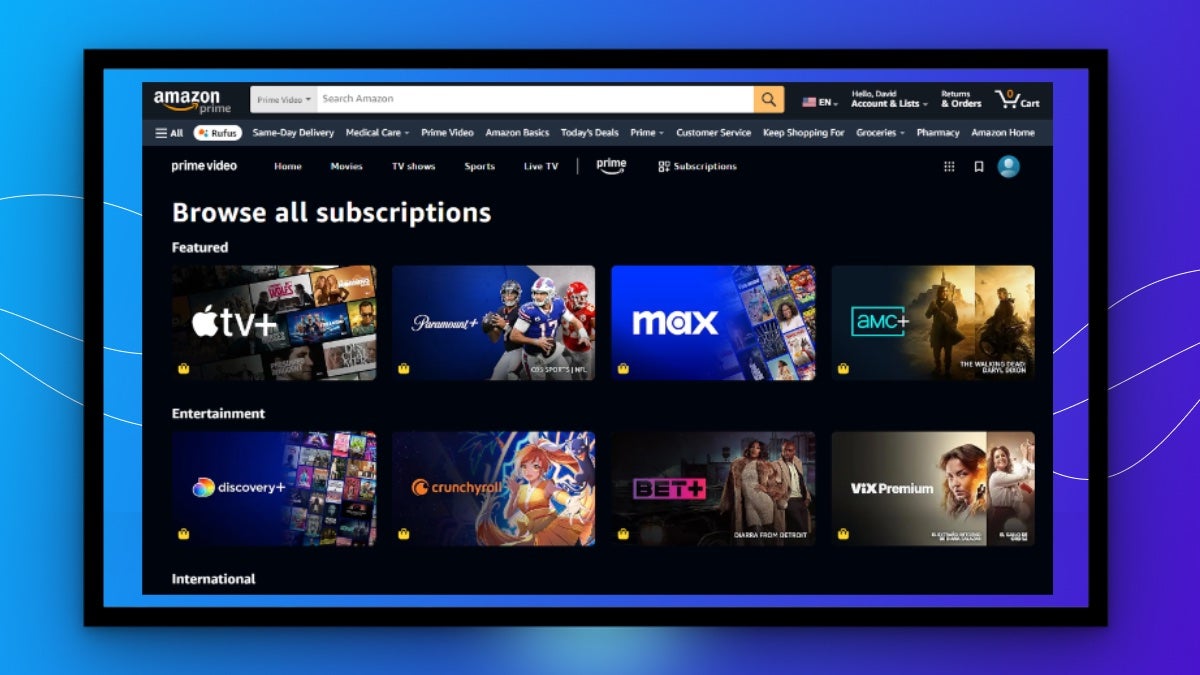Should You Sign Up for Streaming Services via an Aggregator?
Should You Sign Up for Streaming Services via an Aggregator?
Aggregation platforms can be useful tools for streaming-loving customers, but what are the drawbacks of using such services?

The medium of on-demand streaming gives customers a tremendous number of choices; sometimes too much. Consumers can shop for, and subscribe to, a nearly unlimited amount of services, but keeping track of all those bills can be a full-time job in and of itself. A 2024 survey found that 73% of customers want an aggregator service that keeps all of their subscriptions in a single place, but are the streaming aggregation platforms currently available really the best way to carry multiple streaming accounts? I’ll break down the pros and cons of the biggest aggregator options below, including telling you which services carry what major streamers.
What You Need to Know About Streaming Aggregators
What Are the Pros of Using Aggregators?
There are definite advantages to using an aggregator to manage your streaming subscriptions. They keep all of your bills in one place, which makes controlling your monthly entertainment budget much easier. It also creates one, unified platform for managing subscriptions; if you want to cancel one, you go to the same website that you’d use for all your other streaming needs instead of having to hunt up the individual websites you used to sign up in the first place.
Being able to access all of your streaming services using a single interface can be much less confusing, as well. Different streamers offer different user experiences, and having a standard interface that doesn’t swap out content rows or move your watchlist without warning is a definite plus. You’ll always know how to watch what you want easily, with a minimum of searching.
Generally, the prices per streamer on these platforms mirror what the services charge directly, but occasionally, the streaming hubs do offer their own sales, including Amazon's Prime Days. This is true in the converse as well, but more on that momentarily.
What Are the Cons of Using Aggregators?
There are some drawbacks to using streaming aggregators, as well. First, many streaming services offer discounts for new customers that are only available to users who sign up directly. Aggregators often don’t get included in such deals, and mostly charge the full subscription price for individual services. While the streaming hubs generally offer the same free trial periods, if you want the best deals, you should go directly through the service nearly all of the time.
It can also be very easy to forget a subscription using an aggregator. That happened to me; I added a subscription to the Cartoon Network streaming service Boomerang via Prime Video several years ago, stopped watching almost immediately, but forgot to unsubscribe until two months ago.
Availability can also be a drawback of aggregator services. Some platforms don’t provide certain streamers or certain plans; Roku, for example, sometimes doesn’t offer ad-supported subscription options because of disputes between it and the streamer’s owner regarding a split of ad revenues. So, before you decide to sign up for a service via a hub platform, make sure that the version of a streamer you are interested in is actually offered.
What Are the Top Streaming Aggregators?
Prime Video

Amazon’s Prime Video is one of the best-known streaming aggregators, with a popular interface and a good selection of streaming services available to add to your subscription. Better yet, Amazon provides frequent deals on the streamers in its Subscriptions section, using events like Prime Day or Black Friday to cut prices as low as $2 per month.
The biggest disadvantage of Prime Video is that it does not offer some of the bigger streaming options on the market, including Netflix, Disney+, Hulu, or Peacock. Each individual service is different, but in nearly every case, it’s likely that the owners of these streamers don’t want to give Prime Video a commission for offering their services and want to maintain complete control over the user relationship and data involved in their subscription.
Top streamers available on Prime Video include:
Apple TV

The Apple TV app is a highly useful way for Apple TV owners to aggregate their subscriptions. Like Prime Video, however, some companies don’t like Apple’s commissioning practices; Netflix doesn't allow customers to bill through Apple any longer, for example, and Disney+ and Hulu just followed the same path.
Top streamers available on Apple TV include:
Roku

One of the biggest advantages of owning a Roku streaming device or smart TV — other than a user-friendly interface that most users enjoy — is the wide availability of streaming options available. Because Roku doesn’t operate a paid subscription streamer like Apple and Amazon do, companies are more willing to sell their own streaming subscriptions through it.
Top streamers available with Roku include:
